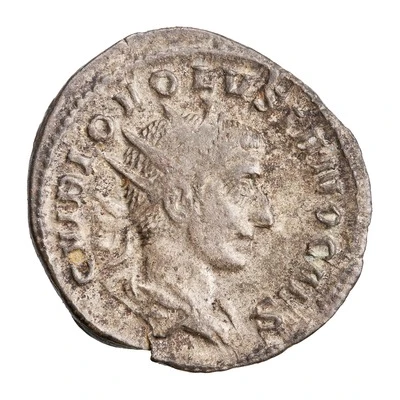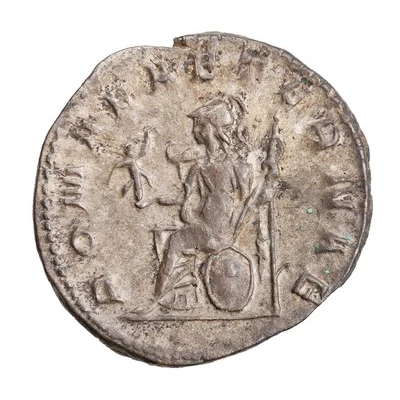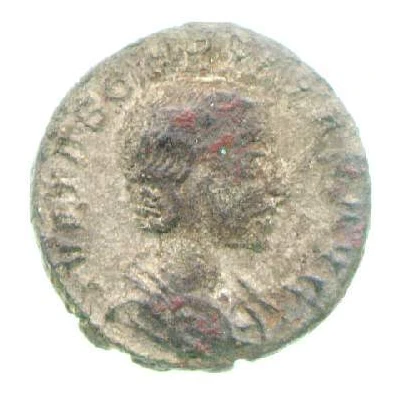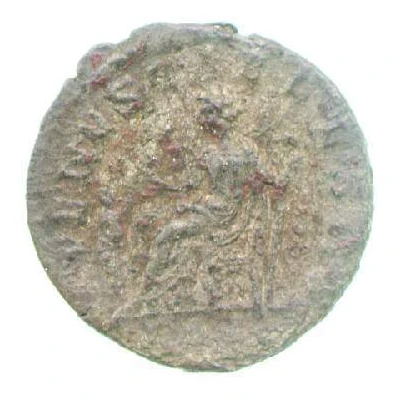Antoninianus - Gordian III LIBERTAS AVGG; Libertas
| Silver | - | - |
| Issuer | Rome › Roman Empire (27 BC - 395 AD) |
|---|---|
| Emperor | Gordian III (Marcus Antonius Gordianus) (238-244) |
| Type | Standard circulation coin |
| Years | 251-253 |
| Value | Antoninianus (1) |
| Currency | Antoninianus, Reform of Caracalla (AD 215 – 301) |
| Composition | Silver |
| Shape | Round (irregular) |
| Technique | Hammered |
| Demonetized | Yes |
| Updated | 2024-10-05 |
| Numista | N#280994 |
|---|---|
| Rarity index | 100% |
Reverse
Libertas, draped, standing left, holding pileus in extended right hand (?) and rod in left hand (?).
Script: Latin
Lettering: LIBERTAS AVGG
Translation:
Libertas Augustorum.
Freedom of the emperors (Augusti).
Comment
Source:Online Coins of the Roman Empire (OCRE)
Interesting fact
The Antoninianus coin was introduced by the Roman Emperor Caracalla in 215 AD as a replacement for the denarius, which had been the standard Roman currency for centuries. The Antoninianus was made of silver and had a higher purity level than the denarius, which had been debased over time. The coin was named after Caracalla's adoptive father, Antoninus Pius, and it became the main currency of the Roman Empire for over a century. The Libertas AVGG (LIBERTAS AVGG; Libertas) variety of the Antoninianus coin that was issued during the reign of Gordian III (238-244 AD) and features the goddess Libertas on the reverse. The coin's design was meant to promote the idea of liberty and freedom, which was an important concept in Roman society at the time. Overall, the Antoninianus coin played an important role in the Roman Empire's economy and was a symbol of the empire's power and influence. Its design and message of liberty continue to fascinate historians and collectors today.



